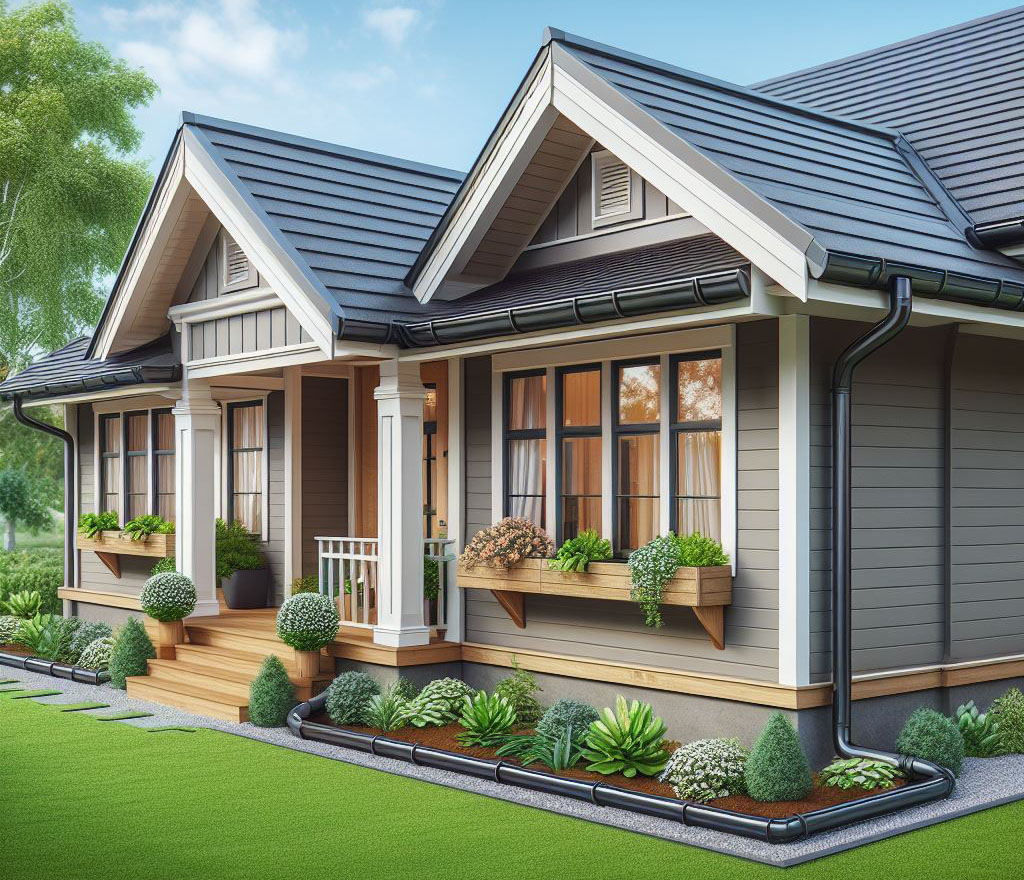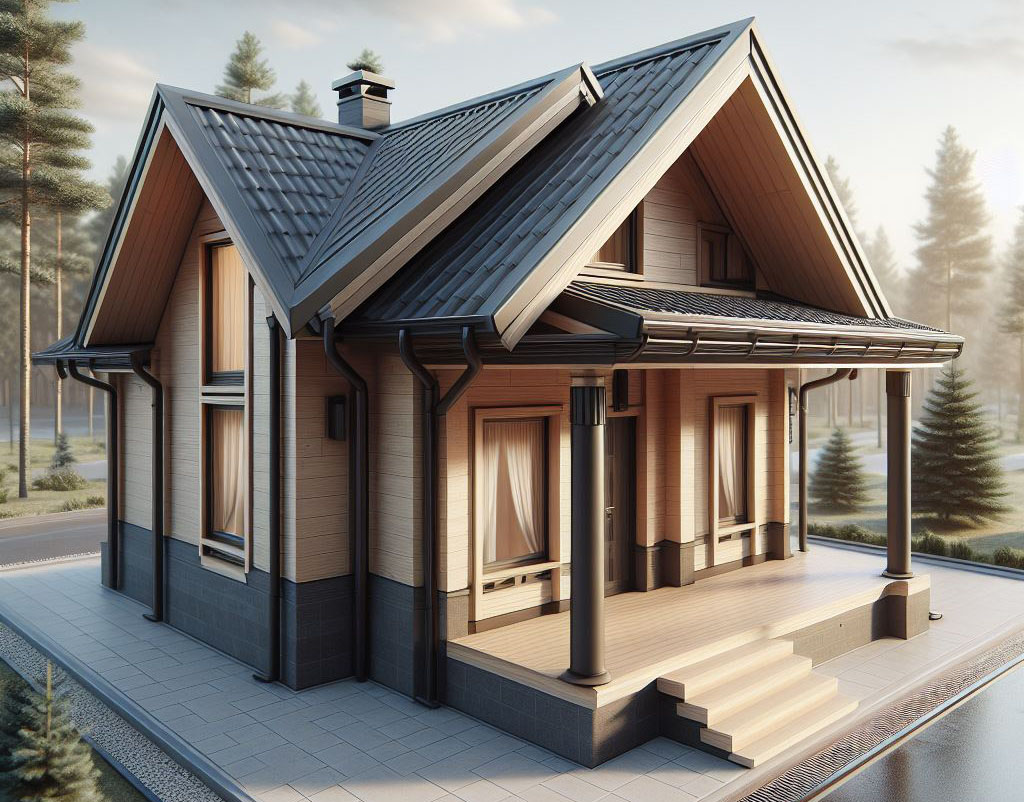Selecting the appropriate roofing material is not just a stylistic decision but a foundational one that influences the integrity, comfort, and financial value of your home. The debate between shingle and tile roofs is more than a matter of taste, it’s about understanding how each option can protect, enhance, and add value to your property. Drawing on years of experience in the field, I’ve observed the profound impact this choice can have on both the functionality and the appeal of a home.

Understanding Roofing Materials
Shingles are the versatile workhorses of roofing materials. Primarily crafted from asphalt, they’re designed to offer effective water shedding in a visually appealing package. Yet, the variety doesn’t end with asphalt. There are wooden shingles for a touch of rustic charm and metal shingles for a sleek, contemporary look, catering to diverse architectural styles and personal preferences.
Tiles embody the essence of architectural tradition and durability. Whether molded from clay or shaped from concrete, tiles offer a timeless aesthetic combined with formidable resistance to the elements. They serve not just as a roof over your head but as a testament to enduring quality and style that has sheltered generations.
Advantages and Disadvantages of Shingle Roofs
Pros:
- Affordability. Shingles offer an economical solution for roofing, providing reliable protection without a hefty price tag.
- Ease of Installation. With their lightweight nature and straightforward application process, shingle roofs are accessible for both professionals and keen DIYers.
- Variety. The array of available colors, textures, and styles makes shingles a flexible choice to complement any home exterior.
Cons:
- Shorter Lifespan. Despite their practicality, shingles tend to have a more limited lifespan, particularly in regions prone to extreme weather.
- Wind Sensitivity. Vulnerable to high winds, shingles can be lifted or torn away, exposing your home to potential damage.
- Environmental Impact. The production and disposal of asphalt shingles raise concerns about sustainability, as they often contribute to landfill waste.

Advantages and Disadvantages of Tile Roofs
Pros:
- Longevity. Tile roofs stand the test of time, boasting lifespans that can extend over a century with proper maintenance, embodying a commitment to durability.
- Insulation. Offering natural insulation properties, tiles help regulate indoor temperatures, leading to energy savings and enhanced comfort.
- Resilience. Designed to withstand severe weather conditions, tiles offer superior protection against wind, hail, and fire, ensuring peace of mind for homeowners.
Cons:
- Higher Initial Investment. The superior qualities of tile come with a higher upfront cost, reflecting their long-term value and performance.
- Weight Considerations. The substantial weight of tile roofing necessitates a robust structural support system, potentially requiring modifications for some properties.
- Complex Installation. Installing a tile roof demands expertise and precision, making it a task best left to experienced professionals to ensure optimal performance and aesthetics.
Comparative Analysis: Shingle vs. Tile Roofs
In the realm of roofing choices, the decision between shingle and tile roofs is more nuanced than it appears at first glance. It’s a balance of considering long-term durability, ease of maintenance, initial and ongoing costs, and the aesthetic contribution to your home’s overall appeal.
Durability. Tile roofs have a renowned reputation for their robustness. Crafted from clay or concrete, they withstand the elements with grace, often lasting over a century with minimal fuss. Shingle roofs, while more susceptible to wear and tear, offer a respectable service life of 20-30 years when properly maintained.
Maintenance. Shingle roofs boast ease of care. A routine inspection and occasional replacement of damaged shingles usually suffice. Tile roofs, despite their sturdiness, require vigilant maintenance to replace or repair broken tiles to prevent water infiltration.
Cost-Effectiveness. Initially, shingles present a more budget-friendly option, appealing to those looking to balance cost with performance. However, the longevity and enduring value of tile roofs can render them more cost-effective over time, despite the higher upfront investment.
Aesthetic Appeal. The aesthetic versatility of shingles allows them to adapt seamlessly to a variety of architectural styles. Tiles offer a distinct charm, enhancing the visual appeal of homes with their classic and enduring look.
Climate Suitability. Tile roofs excel in hot climates, reflecting heat and offering fire resistance, making them ideal for areas prone to such conditions. Shingles are adaptable, performing well in a range of climates but may falter under extreme heat or high winds.
Energy Efficiency. Tiles stand out for their natural insulating properties, contributing to a more stable and comfortable indoor environment year-round. Shingles, especially lighter-colored variants, can offer reflective benefits but typically absorb more heat than tiles.
Return on Investment. The initial cost of tile roofing can be offset by its durability and energy efficiency benefits, potentially increasing home value. Shingles, while less costly upfront, provide a shorter-term solution but can still enhance curb appeal and property value.
Installation and Maintenance
The installation of both shingle and tile roofs demands attention to detail and adherence to best practices to ensure longevity and performance.
Installation. Shingle installation is widely regarded for its simplicity, making it an accessible option for professionals and experienced DIYers alike. Tile roofing, with its considerable weight and complexity, requires expert installation to ensure structural integrity and optimal performance.
Maintenance Tips:
- Conduct biannual inspections to identify and address potential issues early on.
- Remove debris and maintain clean gutters to prevent water damage.
- Promptly repair or replace damaged shingles or tiles to prevent further damage.
FAQ Section
Shingles offer a service life of approximately 20-30 years, while tiles can exceed a century with proper care.
This practice is not advisable due to weight considerations and potential compatibility issues.
Initially, shingles are more cost-effective, but the long-term durability and efficiency of tiles can provide greater overall value.
Yes, tiles are often made from natural materials and have a longer lifespan, reducing their environmental impact compared to shingles.
Tile roofs are exceptionally resistant to high temperatures and fire, making them suitable for harsh climates. Shingles are versatile but may struggle in extreme heat or wind.
Indeed, the weight of tile roofing requires that the structure be evaluated for adequacy, which may necessitate reinforcement.
Maintaining a roof involves regular inspections, timely repairs, and keeping the roof clean of debris to ensure its longevity and functionality.
